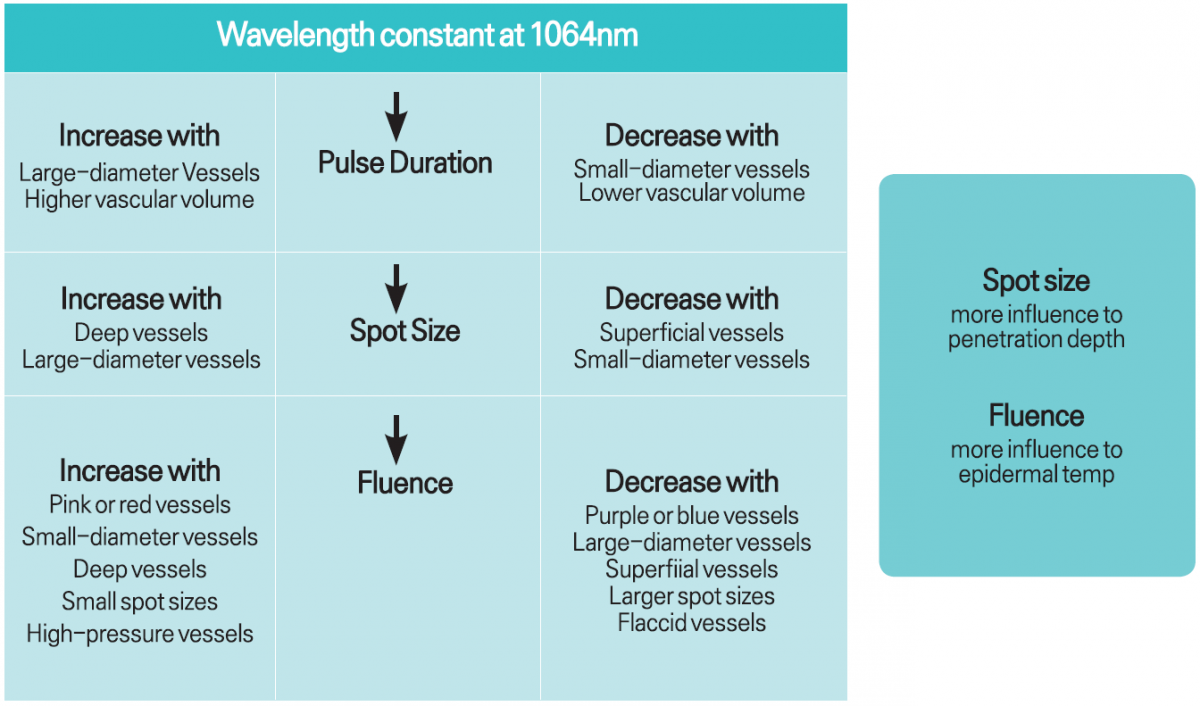
▶ Previous Artlcle: #14-5. Long-pulsed Nd:YAG Laser
Vascular Treatment using Long-pulsed Nd:YAG Laser
When treating vascular lesions with a long-pulsed Nd:YAG laser, parameters should be set considering the thickness, depth, distribution, and color of blood vessels, as with hair removal, and the skin condition of the patient should always be considered this time as well.
When setting parameters, first, pulse duration should be determined according to the thickness of the blood vessel.
For thin vessels, short pulse durations should be used, and for thick vessels, long pulse durations should be used for effective treatment.
[Advertisement] MAGNUM(Q-switched Nd:YAG Laser) – Manufacturer: (www.i-dana.com)]
Second, spot size is a parameter related to the depth and diameter of blood vessels.
For superficial vessels and thin vessels, small spot sizes (2-3 mm) are used, and for deep vessels and thick vessels, wide spot sizes (5-10 mm) are used.
Third, fluence should continue to change according to the vessel color, diameter, depth, vessel pressure, and spot size setting.
For example, for purple or blue, wide, shallow vessels, the fluence should be lowered, and for red, small, deep vessels, the fluence should be increased.
However, a wide spot size and a high fluence should not be set at the same time.
In this case, the total energy is increased, which may cause side effects such as burns to the tissue.
So, the spot size should be increased first, and the parameter should be finally determined after seeing the reaction with the tissue, while stepping up the fluence from low to high.
Table 1. Algorithm for the long pulsed Nd:YAG Laser treatment of deep vascular lesions (Source: Groot D, Rao J, Johnston P, Nakatsui T. Algorithm for using a long-pulsed Nd:YAG Laser in the treatment of deep cutaneous vascular lesions. Dermatol Surg. 2003 Jan; 29(1)).
-To be continued





















